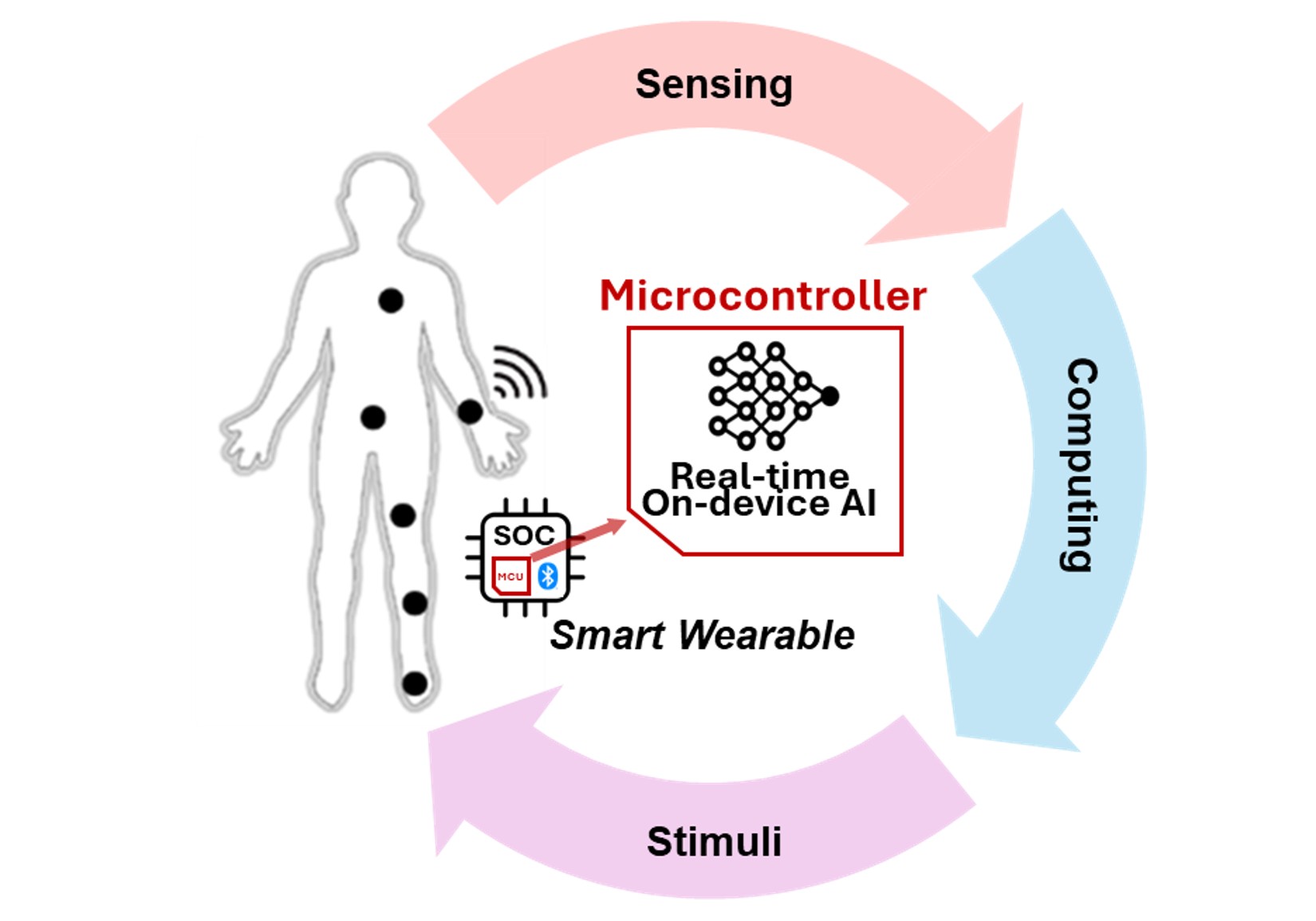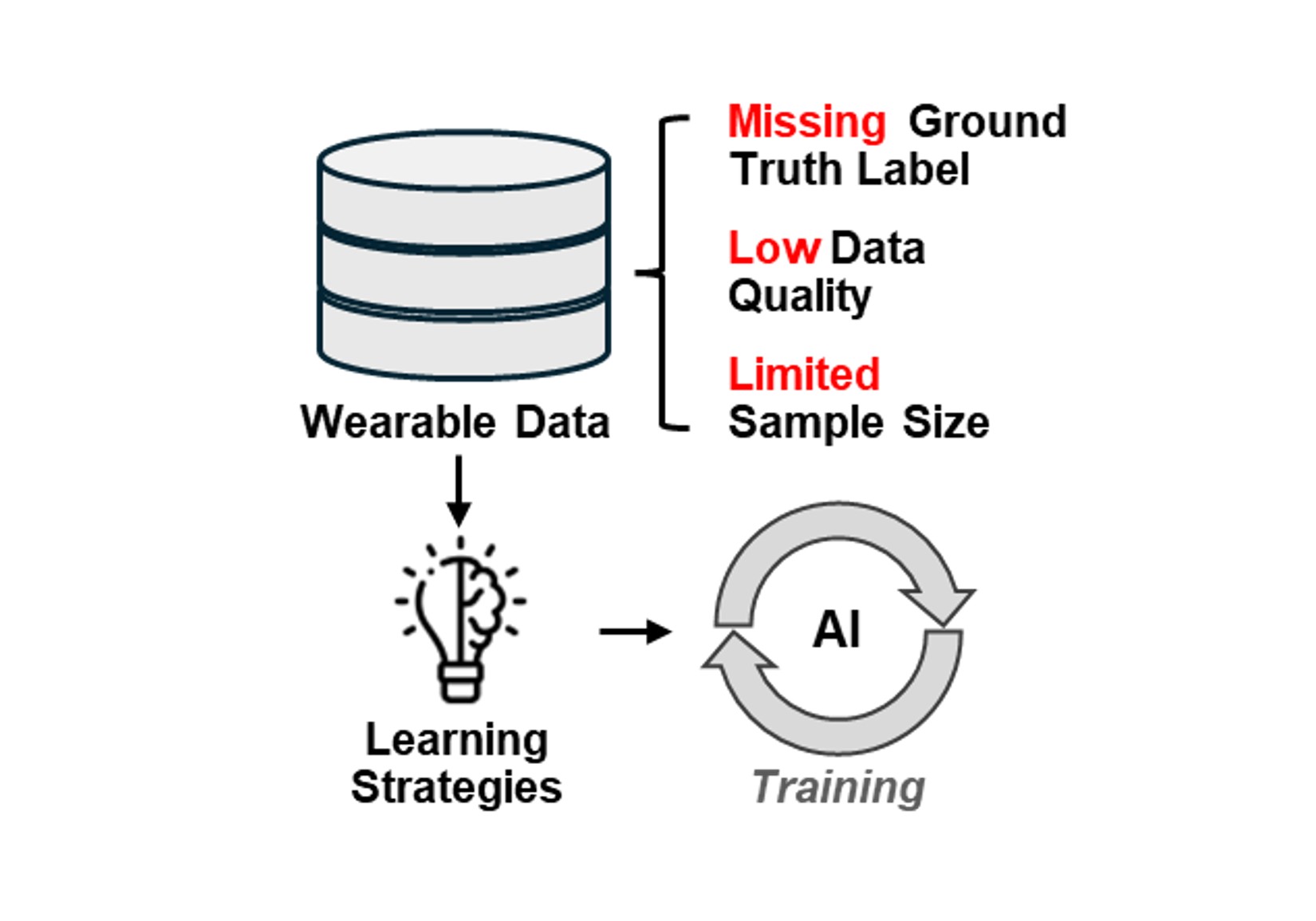Research
Research Themes

Smart Wearable Electronics
Individuals with neurological disorders often exhibit abnormal gait and poor balance due to factors such as muscle weakness, spasticity, deformities, or self-developed compensatory movements. Detecting and correcting these compensations in real time is critical to improving clinical outcomes, promoting natural gait, reducing overuse injuries, pain, and fall risk. Our group works on designing smart wearable devices equipped with customized, real-time on-device machine learning to detect compensatory movements and provide real-time cueing or stimuli, enabling human-in-the-loop interaction to support continuous adaptation and improvement.

Novel Wearable-derived Biomarkers and Predictive AI
Remote patient monitoring offers clinicians the full picture of their patients in the community. Consumer-grade wearables (e.g., Fitbit, Apple Watch) offer great potential for remote health monitoring by measuring multi-modal data like heart rate, activity, and sleep. Our group models longitudinal wearable data to develop novel digital biomarkers and predictive AI, aiming to support clinical decision-making as well as engaging patients by providing them feedback, ultimately enhancing community-based remote health monitoring.

Learning Strategies to Build Robust AI using Health Sensor Data
Uncertainty in wearable data has been a critical challenge in developing reliable AI for wearables. The uncertainty—stemming from limited sample sizes, missing data and ground truth in uncontrolled environments such as community settings, or ambiguity in data labeling often encountered in clinical questions—often undermines the robustness and generalizability of AI models. Our group aims to tackle these challenges by developing and applying different learning strategies to enhance the AI training process and improve performance when AI is being deployed.